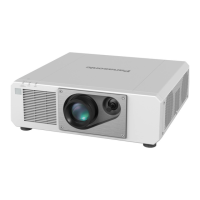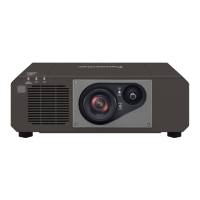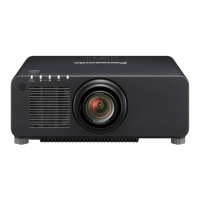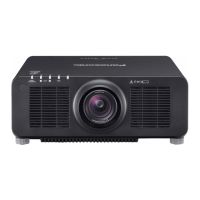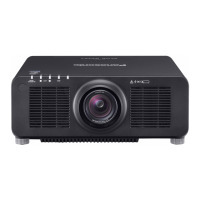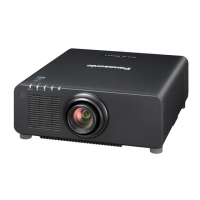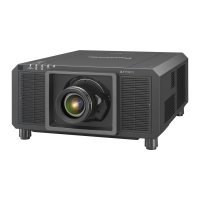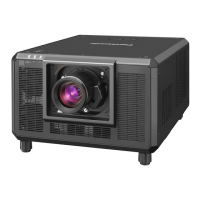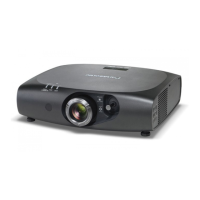Chapter 5 Operations — Network connection
136 - ENGLISH
Network connection
The projector is equipped with the network function, and following is possible by connecting to a computer.
f Web control
Setting, adjustment, and displaying status of the projector are possible by accessing the projector from a
computer.
Refer to “Web control function” (x page 139) for details.
f Multi Monitoring & Control Software
“Multi Monitoring & Control Software”, which is a software application to monitor and control multiple display
devices (projector or at panel display) connected via LAN, can be used.
Refer to the Operating Instructions of the “Multi Monitoring & Control Software” in the supplied CD-ROM for
details.
f Early Warning Software
“Early Warning Software”, which is a software application to monitor the status of the display devices (projector
or at panel display) or the peripheral device within the intranet, and to notify the problem or to detect the sign of
possible problem of the device, can be used.
Visit the Panasonic website (http://panasonic.net/avc/projector/pass/) for details.
f PJLink
Operation or status query of the projector can be performed from a computer using the PJLink protocol.
Refer to “PJLink protocol” (x page 164) for details.
f Art-Net
Setting of the projector can be operated by the DMX controller or application software using the Art-Net protocol.
Refer to “Using Art-Net function” (x page 165) for details.
f Command control
Operation or status query of the projector can be performed from a computer using the control command.
Refer to “Control commands via LAN” (x page 169) for details.
Connecting to the network
The projector can be connected to the network using the <LAN> terminal or the <DIGITAL LINK/LAN> terminal.
The Ethernet signal from a twisted-pair-cable transmitter can be received in the <DIGITAL LINK/LAN> terminal
together with the video, audio, and serial control signal via a LAN cable.
f Use either of the <LAN> terminal or the <DIGITAL LINK/LAN> terminal when a twisted-pair-cable transmitter is
not used.
f To connect a twisted-pair-cable transmitter that is not supporting send/receive of the Ethernet signal, use the
<LAN> terminal.
f To send/receive the Ethernet signal via a twisted-pair-cable transmitter, use the <DIGITAL LINK/LAN> terminal.
Example of a normal network connection
Computer
Projector
LAN cable (straight) LAN cable (straight)
Hub
Attention
f When a LAN cable is directly connected to the projector, the network connection must be made indoors.
Note
f A LAN cable is required to use the network function.

